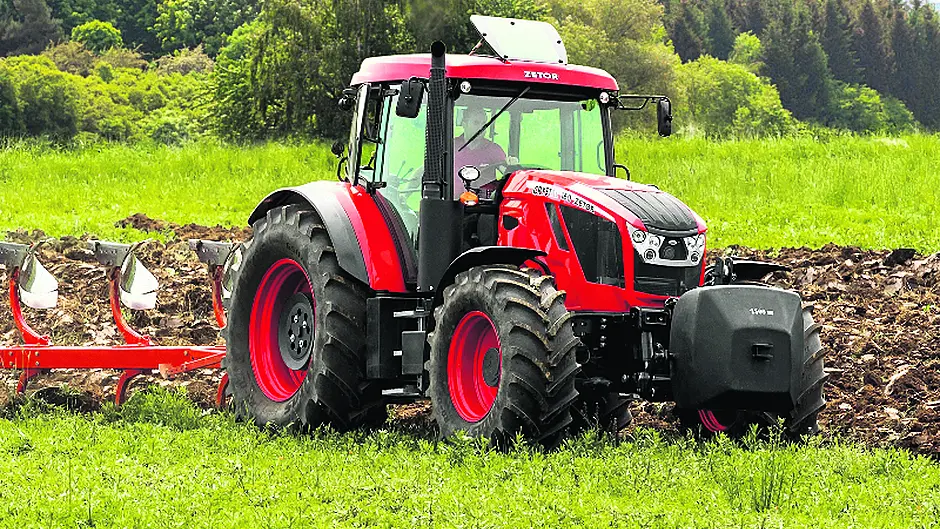As tractors and other machinery continue to increase in size
Sgt Ian
O’Callaghan
FOLLOWING a comprehensive review, new farm vehicle regulations have been introduced.
They stem form a public consultation undertaken by the Road Safety Authority (RSA) over a prolonged period in 2008-2009, which examined the current legislation, policy and practice relating to the use of agricultural vehicles on public roads.
The current regulations are in place for more than half a century, during which time agricultural vehicles have become bigger, faster and more powerful, and their use has been expanded to include a wide variety of tasks outside the scope of the current regulations. The new standards are in effect since January 1st, 2016.
Agricultural vehicles are now widely used on our roads; they are generally constructed to very high standards and it is important that the regulatory regime reflects the developments in agricultural vehicle technology and requires them to comply with recognised vehicle standards in relation to a number of key safety areas, i.e. braking, suspension systems, tyres and lighting, as well as the weights for which they are designed.
The majority of correctly-maintained tractors already in use comply with the revised standards being introduced. Those that do not comply are likely to need only minor remedial works carried out such as fitting of a flashing amber beacon and/or a replacement manufacturer’s plate indicating their design axle weights and maximum permitted towable masses.
Trailers already in service will also be able to continue in use, but, due to varying construction standards, some will need remedial work carried out if they are intended to be used at higher weights and at speeds of more than 40 km/h.
Tractors and trailers operating at higher speeds and weights will also be required to be appropriately plated and speed rated.
A summary of these standards is as follows:
Braking – More powerful braking systems will be required for agricultural vehicles operating at speeds in excess of 40km/h. Most of the correctly maintained tractors which have come into use in the past 30 years already meet these requirements.
Lighting & Visibility – Agricultural vehicles will need to be equipped with appropriate lighting systems, flashing amber beacons and reflective markings.
Weights, Dimensions & Coupling – New national weight limits are being introduced. These will enable tractor and trailer combinations which are unplated to continue in use at limits which are safe for such vehicles, i.e. combinations of agricultural tractors and trailers, where either of them is unplated, will have their maximum towable mass capped at three times the tractor’s unladen weight.
Plated tractors and trailer combinations will benefit from being able to operate at higher weight limits of up to 24 and 34 tonnes for tandem and triaxle agricultural trailers respectively that meet certain additional requirements, i.e. they must be plated, they must be fitted with a flexible suspension system, they must be fitted with flotation tyres for operation at 10 tonnes per axle in the case of a tandem axle trailer or 9 tonnes per axle in the case of a triaxle trailer, and finally they must be fitted with a steered or steering axles if they have an axle spacing of 1.8 metres or greater.
Exemptions from compliance with the revised national weight limits are being provided for certain types of interchangeable towed equipment such as slurry tankers, manure or fertilizer spreaders and grain chaser bins.
Plating & Speed Rating - Trailers operating at weights exceeding 19 tonnes or at speeds exceeding 40 km/h will require fitment of both an authorisation (i.e. a national weights and dimensions plate) and a speed disc.
If you are unsure as to whether your vehicle or vehicles comply with these revised standards, we recommend that you contact the vehicle manufacturer or one of their authorized distributors for advice.
A comprehensive booklet entitled, ‘Revised Standards for Agricultural Vehicles,’ has been prepared on the RSA website which contains practical advice, including tips on achieving compliance with the revised standards.
A series of short videos has also been prepared, which bring to life the content of the booklet.
Penalties – Breach of the new Regulations may result in a direct summons to court, whereby on conviction, courts may impose a class C fine (up to €2,500), a prison sentence or both on both the person who commits the offence and on the owner of the vehicle.
Note that neither changes to the Driver Licensing and Testing arrangements for prospective Category W (agricultural tractor and works vehicle) license holders, nor the introduction of compulsory roadworthiness testing for agricultural vehicles are being introduced at this time. However these are areas that the RSA will likely consider in the future with a view to implementing further improvements aimed at increasing road safety for all road users encountering agricultural vehicles using public roads.
• Sgt Ian O’ Callaghan is Crime Prevention Officer for Cork West Garda Division and can be contacted at Bandon Garda Station, [email protected] 086-8282333 023-8852261,







